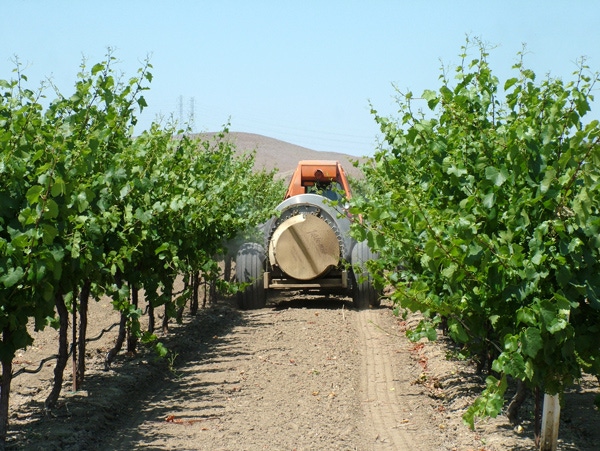
Be ready and able to take on the coming flush of weeds
“Now that temperatures have warmed up, spring and summer weeds should be busting out any time now. So you really need to be on top of your game. That means being able to get into your fields and treating large acreages in a timely manner, even if you have to take on additional equipment and labor.”

If the last three or four years of drought have lulled you into discounting any immediate threat to your grape vines from weeds this spring, you might want to consider this advice from Kurt Hembree, University of California Cooperative Extension weed management farm advisor for Fresno County:
“With plenty of soil moisture from the El Nino rains, we’ve had good flushes of winter weeds,” he says. “Now that temperatures have warmed up, spring and summer weeds should be busting out any time now. So you really need to be on top of your game. That means being able to get into your fields and treating large acreages in a timely manner, even if you have to take on additional equipment and labor.”
Early-season weed control is especially critical in raisin vineyards, where lower trellises allow canes to grow down to the ground surface by mid- to late-April. This can hinder the ability to treat the vine rows with herbicides, increasing the risk in late summer of trays of drying grapes becoming contaminated with weed seeds.
Typically, pre-emergence herbicides applied after winter vine prunings are removed will control weeds through mid-summer when the vine canopy is fully developed.
“If you’ve done a good job of this and stayed on top of weed control this winter, you should be in good shape for keeping weeds controlled in the rows later this season,” Hembree says. “Otherwise, you’ll probably have to cut the canes several feet off the ground so you can get in with a burndown herbicide or cultivator to prevent in-row weed growth and seed development.”
Fleabane and marestail remain the top summer weed threat in most vineyards. But, grass species carried into vineyards with irrigation water from canals and ditches are becoming an increasing problem in the summer. They include green foxtail, yellow foxtail and sprangletop.
Two recently-introduced products have added to the choices of herbicides available for managing weeds in California vineyards. One is Zeus. It controls yellow nutsedge among other weeds. The other, Mission, offers both pre- and postemergence control and is effective on such summer weeds as fleabane and marestail and winter weeds like nettle, cheeseweed and panicle willowherb.
Hembree stresses the importance of complying with herbicide label recommendations and operating spray equipment properly
“Grape vines are extremely sensitive to herbicides,” he says. “For best possible product efficacy and to protect your vineyard from herbicide damage, follow the label instructions about when, where and how to apply these products.”
Hembree offers these tips for using and spraying herbicides:
Timing is key
He recommends applying contact herbicides at two to three weeks after weeds emerge. That’s when the plants are most susceptible to the chemicals.
Mix things up
“To help slow development of herbicide resistance in the weeds, it’s really important to tank mix at least two products, each with different modes of chemical action,” Hembree says.
Keep spray pressure in the range of 30 to 40 psi.
This is the range in which the newer spray nozzles are designed to provide the optimum spray droplet size and spray pattern while reducing drift, Hembree says.
Use only the type of nozzle specified on the product label.
Operate the spray rig at a ground speed of 2 to 3 mph.
Ensure spray operators know how to use the equipment and apply products properly.
“Make sure the applicator knows not only how and where to apply the products but also how to spot any equipment malfunctions, such as plugged nozzles, poor spray patterns or excessive drift, and how to correct them,” Hembree says. “It’s especially important to be aware of wind conditions and to use shields and drift reduction nozzles when spraying during canopy and fruit development.”
About the Author(s)
You May Also Like



